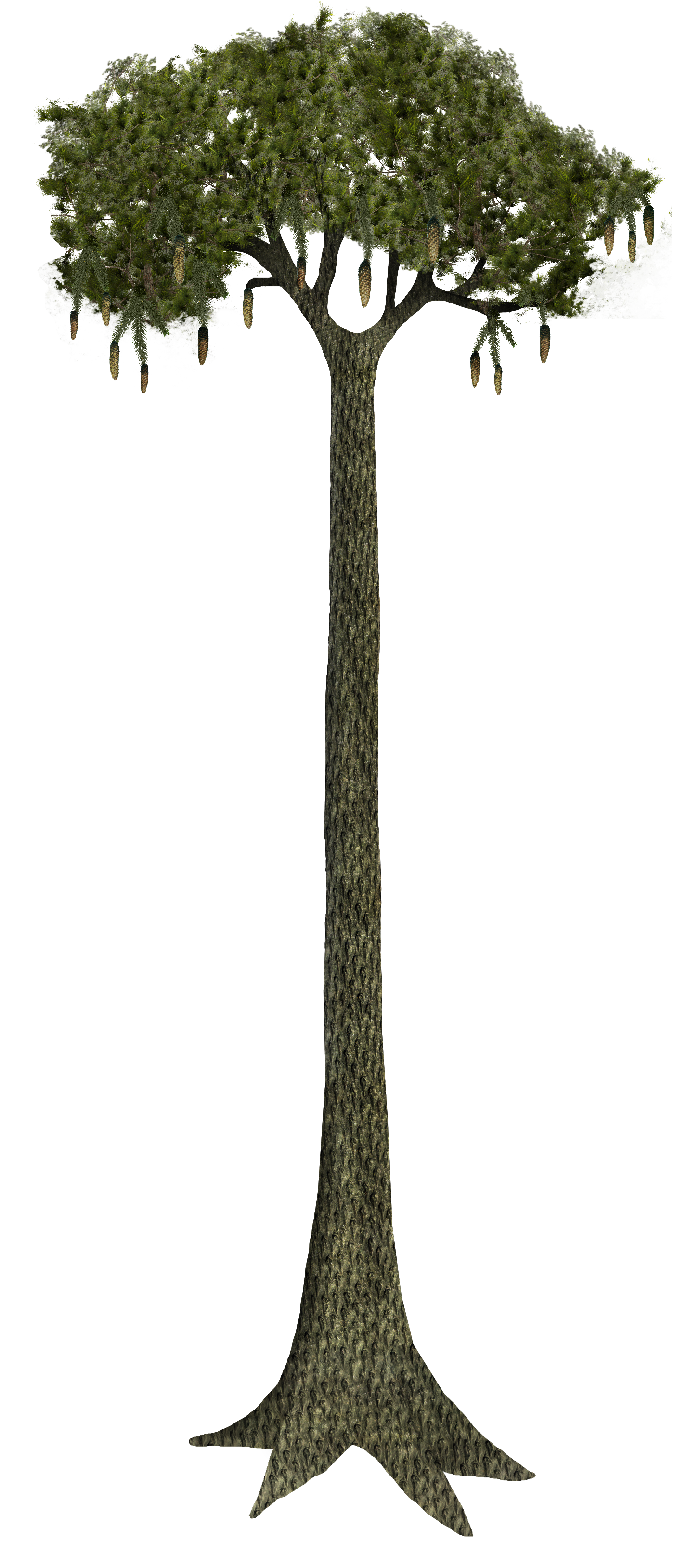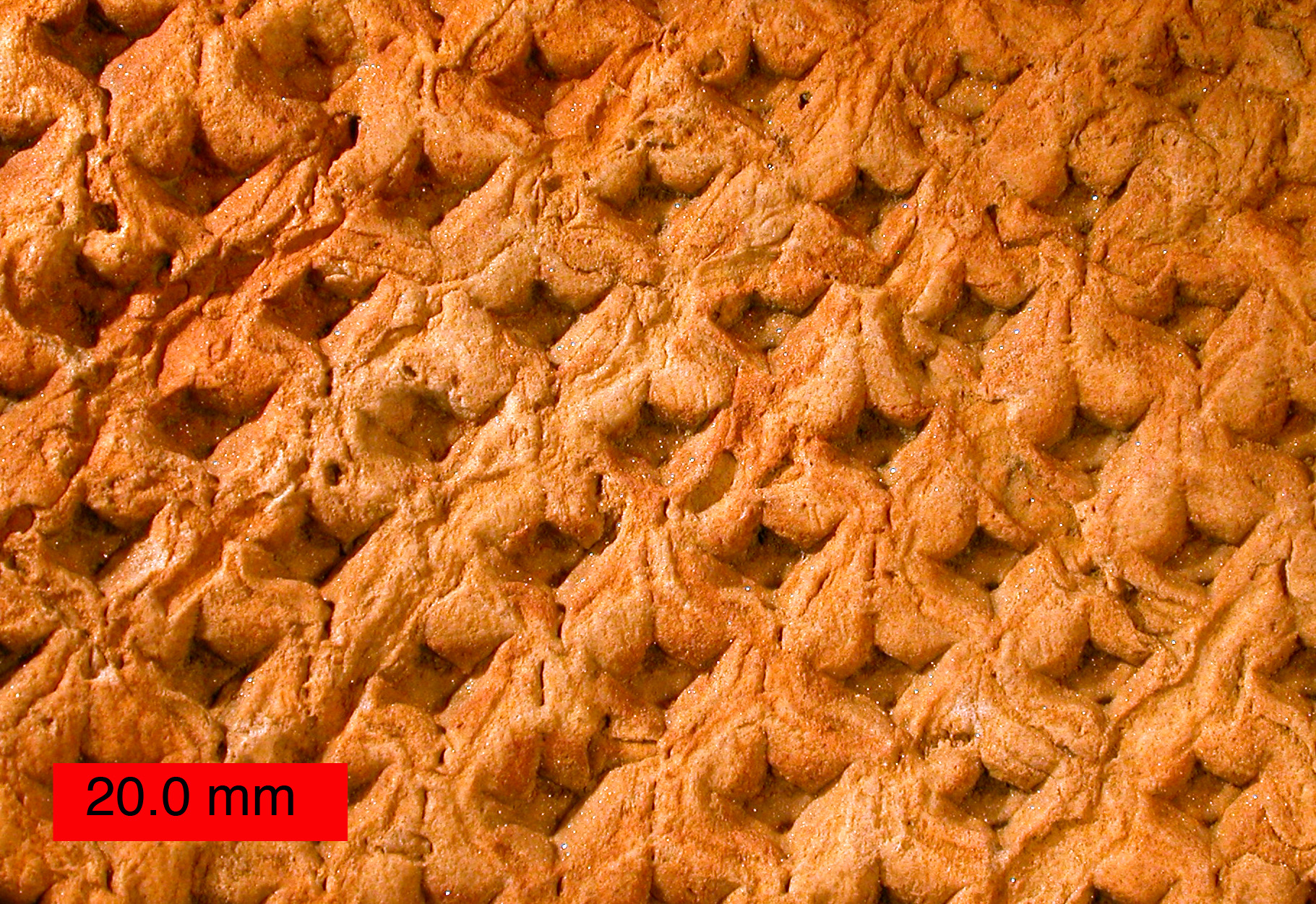|
Lycopod
Lycopodiopsida is a class of vascular plants also known as lycopsids, lycopods, or lycophytes. Members of the class are also called clubmosses, firmosses, spikemosses and quillworts. They have dichotomously branching stems bearing simple leaves called microphylls and reproduce by means of spores borne in sporangia on the sides of the stems at the bases of the leaves. Although living species are small, during the Carboniferous, extinct tree-like forms (Lepidodendrales) formed huge forests that dominated the landscape and contributed to coal deposits. The nomenclature and classification of plants with microphylls varies substantially among authors. A consensus classification for extant (living) species was produced in 2016 by the Pteridophyte Phylogeny Group (PPG I), which places them all in the class Lycopodiopsida, which includes the classes Isoetopsida and Selaginellopsida used in other systems. (See Table 2.) Alternative classification systems have used ranks from divis ... [...More Info...] [...Related Items...] OR: [Wikipedia] [Google] [Baidu] |
Lycopodiales
The Lycopodiaceae (class Lycopodiopsida, order Lycopodiales) are an old family of vascular plants, including all of the core clubmosses and firmosses, comprising 17 accepted genera and about 500 known species. This family originated about 380 million years ago in the early Devonian, though the diversity within the family has been much more recent. "Wolf foot" is another common name for this family due to the resemblance of either the roots or branch tips to a wolf's paw. Description Members of Lycopodiaceae are not spermatophytes and so do not produce seeds. Instead they produce spores, which are oily and flammable, and are the most economically important aspects of these plants. The spores are of one size (i.e. the plants are isosporous) and are borne on a specialized structure at the apex of a shoot called a strobilus (plural: strobili), which resembles a tiny battle club, from which the common name derives. Members of the family share the common feature of having a microphy ... [...More Info...] [...Related Items...] OR: [Wikipedia] [Google] [Baidu] |
Palhinhaea Cernua
''Palhinhaea cernua'', synonym ''Lycopodiella cernua'' and ''Lycopodium cernuum'', is a plant in the family Lycopodiaceae, commonly known as the staghorn clubmoss. The Hawaiian name for the plant is ''wāwaeʻiole'', or "rat's foot". It has a substantial number of scientific synonyms in several genera. The genus '' Palhinhaea'' is accepted in the Pteridophyte Phylogeny Group classification of 2016 (PPG I), but not in other classifications which submerge the genus in '' Lycopodiella''. It is the largest of the clubmosses, having rhizomes up to in length, with leafy uprights up to in height. Distribution ''Palhinhaea cernua'' is a widespread pan-tropical species, found mostly at higher elevations in subtropical mountain climates of tropical Africa, Asia, the Pacific Islands and the Neotropics. In Europe, it is found in the Azores (where it is possibly native) and formerly on Madeira. It has been introduced in continental Portugal (Valongo), Sicily and Malta Malta, offici ... [...More Info...] [...Related Items...] OR: [Wikipedia] [Google] [Baidu] |
Selaginella Apoda
''Selaginella apoda'', commonly known as meadow spikemoss, is a perennial lycophyte native to much of the eastern United States and parts of northeastern Mexico. The life cycle is the shortest of the genus ''Selaginella'', as well as one of the shortest among the lycophytes. ''Selaginella apoda'' is found primarily in damp soils in habitats such as swamps, wet fields, open woods and along stream banks. ''Selaginella apoda'' presents the potential for case studies involving the plant's adaptability to environmental toxins. It is closely related to '' Selaginella eclipes'' and '' S. ludoviciana'', with both of which it has been reported to form hybrids. This group is characterized by relatively flat strobili and large megasporophylls which occur in the same plane as the lateral leaves. The plant was originally described, and named ''Lycopodium apodum'' by Carl Linnaeus in his ''Species Plantarum'' (1753). Description ''Selaginella apoda'' stems have smaller leaves in two rows ... [...More Info...] [...Related Items...] OR: [Wikipedia] [Google] [Baidu] |
Pteridophyte Phylogeny Group
The Pteridophyte Phylogeny Group (PPG) is an informal international group of systematic botanists who collaborate to establish on the classification of pteridophytes ( lycophytes and ferns) that reflects knowledge about plant relationships discovered through phylogenetic studies. In 2016, the group published a classification for extant pteridophytes, termed "PPG I". The paper had 94 authors (26 principal and 68 additional). The classification was presented as a consensus classification supported by the community of fern taxonomists. Alternative classifications of ferns exist and are preferred by some. PPG I A first classification, PPG I, was produced in 2016, covering only extant (living) pteridophytes. The classification was rank-based, using the ranks of class, subclass, order, suborder, family, subfamily and genus. Phylogeny The classification was based on a consensus phylogeny, shown below to the level of order. The very large order Polypodiales was divided into two subord ... [...More Info...] [...Related Items...] OR: [Wikipedia] [Google] [Baidu] |
Selaginella
''Selaginella'', also known as spikemosses or lesser clubmosses, is a genus of lycophyte. It is usually treated as the only genus in the family Selaginellaceae, with over 750 known species. This family is distinguished from Lycopodiaceae (the clubmosses) by having scale-leaves bearing a ligule and by having spores of two types. They are sometimes included in an informal paraphyletic group called the " fern allies". The species '' S. moellendorffii'' is an important model organism. Its genome has been sequenced by the United States Department of Energy's Joint Genome Institute. The name ''Selaginella'' was erected by Palisot de Beauvois solely for the species '' Selaginella selaginoides'', which turns out (with the closely related '' Selaginella deflexa'') to be a clade that is sister to all other ''Selaginellas'', so any definitive subdivision of the species into separate genera leaves two taxa in ''Selaginella'', with the hundreds of other species in new or resurrected gen ... [...More Info...] [...Related Items...] OR: [Wikipedia] [Google] [Baidu] |
Selaginellales
''Selaginella'', also known as spikemosses or lesser clubmosses, is a genus of lycophyte. It is usually treated as the only genus in the family Selaginellaceae, with over 750 known species. This family is distinguished from Lycopodiaceae (the clubmosses) by having scale-leaves bearing a ligule and by having spores of two types. They are sometimes included in an informal paraphyletic group called the "fern allies". The species '' S. moellendorffii'' is an important model organism. Its genome has been sequenced by the United States Department of Energy's Joint Genome Institute. The name ''Selaginella'' was erected by Palisot de Beauvois solely for the species '' Selaginella selaginoides'', which turns out (with the closely related '' Selaginella deflexa'') to be a clade that is sister to all other ''Selaginellas'', so any definitive subdivision of the species into separate genera leaves two taxa in ''Selaginella'', with the hundreds of other species in new or resurrected genera ... [...More Info...] [...Related Items...] OR: [Wikipedia] [Google] [Baidu] |
Fern
The ferns (Polypodiopsida or Polypodiophyta) are a group of vascular plants (plants with xylem and phloem) that reproduce via spores and have neither seeds nor flowers. They differ from mosses by being vascular, i.e., having specialized tissues that conduct water and nutrients, and in having life cycles in which the branched sporophyte is the dominant phase. Ferns have complex leaf, leaves called megaphylls that are more complex than the microphylls of clubmosses. Most ferns are leptosporangiate ferns. They produce coiled Fiddlehead fern, fiddleheads that uncoil and expand into fronds. The group includes about 10,560 known extant species. Ferns are defined here in the broad sense, being all of the Polypodiopsida, comprising both the leptosporangiate (Polypodiidae (plant), Polypodiidae) and eusporangiate ferns, the latter group including horsetails, Psilotaceae, whisk ferns, marattioid ferns, and ophioglossoid ferns. The fern crown group, consisting of the leptosporangiates and ... [...More Info...] [...Related Items...] OR: [Wikipedia] [Google] [Baidu] |
Vascular Plant
Vascular plants (), also called tracheophytes (, ) or collectively tracheophyta (; ), are plants that have lignin, lignified tissues (the xylem) for conducting water and minerals throughout the plant. They also have a specialized non-lignified Tissue (biology), tissue (the phloem) to conduct products of photosynthesis. The group includes most embryophyte, land plants ( accepted known species) excluding mosses. Vascular plants include the clubmosses, Equisetum, horsetails, ferns, gymnosperms (including conifers), and angiosperms (flowering plants). They are contrasted with nonvascular plants such as mosses and green algae. Scientific names for the vascular plants group include Tracheophyta, Tracheobionta and Equisetopsida sensu lato, Equisetopsida ''sensu lato''. Some early land plants (the rhyniophytes) had less developed vascular tissue; the term eutracheophyte has been used for all other vascular plants, including all living ones. Historically, vascular plants were known as "hi ... [...More Info...] [...Related Items...] OR: [Wikipedia] [Google] [Baidu] |
Isoetes
''Isoetes'', commonly known as the quillworts, is a genus of lycopod. It is the only living genus in the family Isoetaceae and order Isoetales. , there were about 200 recognized species, with a cosmopolitan distribution mostly in aquatic habitats but with the individual species often scarce to rare. Species virtually identical to modern quillworts have existed since the Jurassic epoch, though the timing of the origin of modern ''Isoetes'' is subject to considerable uncertainty. The name of the genus may also be spelled ''Isoëtes''. The diaeresis (two dots over the e) indicates that the o and the e are to be pronounced in two distinct syllables. Including this in print is optional; either spelling (''Isoetes'' or ''Isoëtes'') is correct. Description Quillworts are mostly aquatic or semi-aquatic in clear ponds and slow-moving streams, though several (e.g. '' I. butleri'', '' I. histrix'' and '' I. nuttallii'') grow on wet ground that dries out in the summer. The ... [...More Info...] [...Related Items...] OR: [Wikipedia] [Google] [Baidu] |
Lepidodendrales
Lepidodendrales (from the Greek for "scale tree") or arborescent lycophytes are an extinct order of primitive, vascular, Heterospory, heterosporous, arborescent (tree-like) plants belonging to Lycopodiopsida. Members of Lepidodendrales are the best understood of the fossil lycopsids due to the vast diversity of Lepidodendrales specimens and the diversity in which they were preserved; the extensive distribution of Lepidodendrales specimens as well as their well-preservedness lends paleobotanists exceptionally detailed knowledge of the coal-swamp giants’ reproductive biology, vegetative development, and role in their paleoecosystem. The defining characteristics of the Lepidodendrales are their secondary xylem, extensive periderm development, three-zoned Cortex (botany), cortex, rootlike appendages known as stigmarian rootlets arranged in a spiralling pattern, and megasporangium each containing a single functional megaspore that germinates inside the sporangium. Many of these differe ... [...More Info...] [...Related Items...] OR: [Wikipedia] [Google] [Baidu] |
Euphyllophyte
The euphyllophytes are a clade of plants within the tracheophytes (the vascular plants). The group may be treated as an unranked clade, a division under the name Euphyllophyta or a subdivision under the name Euphyllophytina. The euphyllophytes are characterized by the possession of true leaves A leaf (: leaves) is a principal appendage of the stem of a vascular plant, usually borne laterally above ground and specialized for photosynthesis. Leaves are collectively called foliage, as in "autumn foliage", while the leaves, stem, f ... ("megaphylls"), and comprise one of two major lineages of extant vascular plants. As shown in the cladogram below, the euphyllophytes have a sister relationship to the lycopodiophytes or lycopsids. Unlike the lycopodiophytes, which consist of relatively few presently living or extant taxa, the euphyllophytes comprise the vast majority of vascular plant lineages that have evolved since both groups shared a common ancestor more than 400 mill ... [...More Info...] [...Related Items...] OR: [Wikipedia] [Google] [Baidu] |




